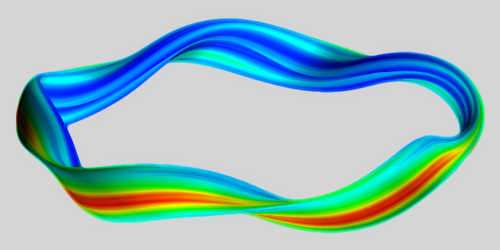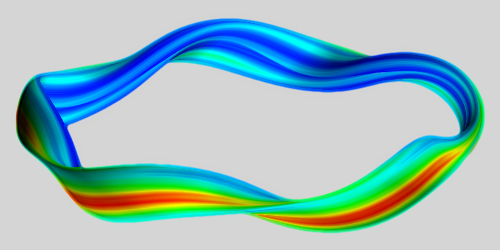Good News for Stellarators
Fusion reactor experiments come in two shapes: the “plain-donut” tokamak and the “curly-donut” stellarator. The simpler-to-implement tokamak design is currently more popular, but engineers are now overcoming some of the challenges in building stellarators. New simulations reveal that the stellarator concept may benefit from inherent stability mechanisms that reduce the effects of turbulence. This could be good news for a recently built stellarator in Germany.
Both the tokamak and stellarator designs use magnetic coils to confine hot plasma in a ring-shaped volume, or torus. For this confinement to work, the magnetic field lines generated by the coils and moving plasma need to spiral or twist as they loop around the ring. The tokamak creates this twisting by inducing currents within the plasma, while the stellarator uses warped magnetic coils. Although difficult to construct, the stellarator benefits from a long operation cycle and the absence of current-driven instabilities.
However, the warped geometry of a stellarator leads to high temperature gradients that produce turbulence. The worry is that strong turbulent fluctuations will cause plasma to escape. To investigate this problem, Pavlos Xanthopoulos and his colleagues at the Max Planck Institute for Plasma Physics (IPP), Germany, have performed computer simulations of a proposed stellarator design called QUASAR. When turbulent eddies are small relative to the variation length of the magnetic field, the team found that strong turbulent fluctuations were restricted to thin bands within the donut volume, so that the overall plasma loss was modest. For large eddies, the stellarator’s asymmetric magnetic field suppressed the strength of the fluctuations. The authors propose that this turbulence stabilization could be verified in the IPP’s Wendelstein 7-X stellarator, which started operation in February 2016.
This research is published in Physical Review X.
–Michael Schirber
Michael Schirber is a Corresponding Editor for Physics based in Lyon, France.





